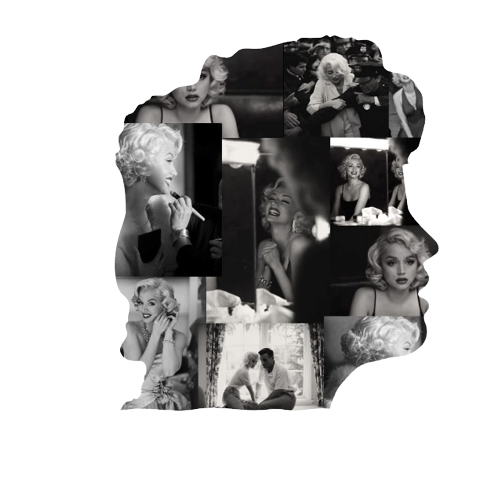Blonde and the Ethics of Biopics

September 25, 2022
*trigger warning: sexual assault, abortion and drug overdose*
Marilyn Monroe. The world knows her as the iconic actress, singer and model from the 1950s; yet, Netflix’s new movie “Blonde” misconstrues Monroe’s story by exploiting her life struggles and trauma.
“Blonde” is based on a novel of the same name written by Joyce Carol Oates. Oates admitted that the book was not a biography and stated in the author’s note that it was a fictional story that reinvented Monroe’s life. However, movie director, Andrew Dominik, marketed “Blonde” as a biopic despite producing the film as a story that loosely resembled Monroe’s life.
“Blonde” has generated controversy surrounding the ethics of biopics. Some argue that biopics are a means of art to tell someone’s story, while others argue that it is unethical when the movies sympathize with or victimize perpetrators and profit from trauma.
In biopics, the visions and perspectives of directors when retelling people’s life stories blur the line between what is respectful or not. While people critique biopics like “Blonde” for inaccurate storylines, biopics like “Schindler’s List” cover highly traumatic historical events and are praised for educating about these horrors. Several other 2022 biopics, such as “House of Gucci” and “Pam and Tommy,” have drawn controversy. The former sympathized with an assassin; the latter was made without the consent of Pamela Anderson.
The controversy of “Blonde” stems from the over-sexualization of Monroe through distasteful scenes of sexual assault, insensitive abortion sequences, and depictions of violence and misogyny. Viewers began to re-evaluate the morality of creating and consuming biopics because of such scenes from this and other biopics.
In “Blonde,” Monroe was sexually assaulted twice, although no historical evidence suggests either occurred in real life. The uncomfortable scenes contained overly graphic rape and sexual assault, drawing public criticism for victimizing Monroe and portraying real-life studio producer Darryl F. Zanuck and President John F. Kennedy as perpetrators towards Monroe. Despite allegations against Zanuck made by other women, these scenes also drew criticism for exploiting Monroe as her consent to represent any abuse she may have experienced could never have been given.
At the beginning of the film, Monroe decides to get an abortion to prevent passing her mother’s mental illness to her child. Once the procedure begins, Monroe begs the doctors to stop because she has changed her mind. When Monroe becomes pregnant again, a scene ensues in which Monroe imagines her aborted child telling her not to harm them again. She miscarries, and her regret for her previous abortion amplifies, haunting her in her dreams. The repetitive anti-abortion undertones are particularly jarring – an insensitive choice considering the polarizing nature of the topic, especially following the 2022 overturning of the landmark abortion rights case Roe v. Wade. Monroe’s alleged abortions drew criticism for unrealistically picturing a talking fetus and for depicting Monroe’s rights as violated during a time when advocating for women’s rights is incredibly important.
The film ends with Monroe overdosing on sedative drugs. Although the film decently portrays Monroe’s struggle with addiction, the death scene is disrespectful as the crew filmed it in the same room where Monroe actually died. Critics called out this decision for exploiting Monroe’s addiction and overdose, as substance abuse is something many people struggle with and not something to be directly recreated for profit.
Andrew Dominik, the director, has made some disturbing comments about his vision of the movie, often objectifying Monroe. Instead of focusing on Marilyn Monroe’s lifetime legacy, Dominik has stated his belief that the movie should only focus on Monroe’s eventual death and what led up to it. He wanted the film to solely portray how the industry sexualized Monroe and her feelings – not how she overcame those issues, formed her own production company, and fought against segregation and anti-communist witch hunts. Dominik’s decisions regarding the film drew criticism for misrepresenting Monroe when Dominik wanted to create the film centered around the sexualization and struggles of women in the industry; he could have created a whole new character instead of exploiting a real-life person.
Although some viewers would still claim that “Blonde” tells Marilyn Monroe’s story in a brutal but necessary way, its controversy demonstrates how filming biopics may not always be a morally sound choice. Ultimately, the producers and writers lack of consideration and respect towards properly sourcing their material is ethically wrong.



